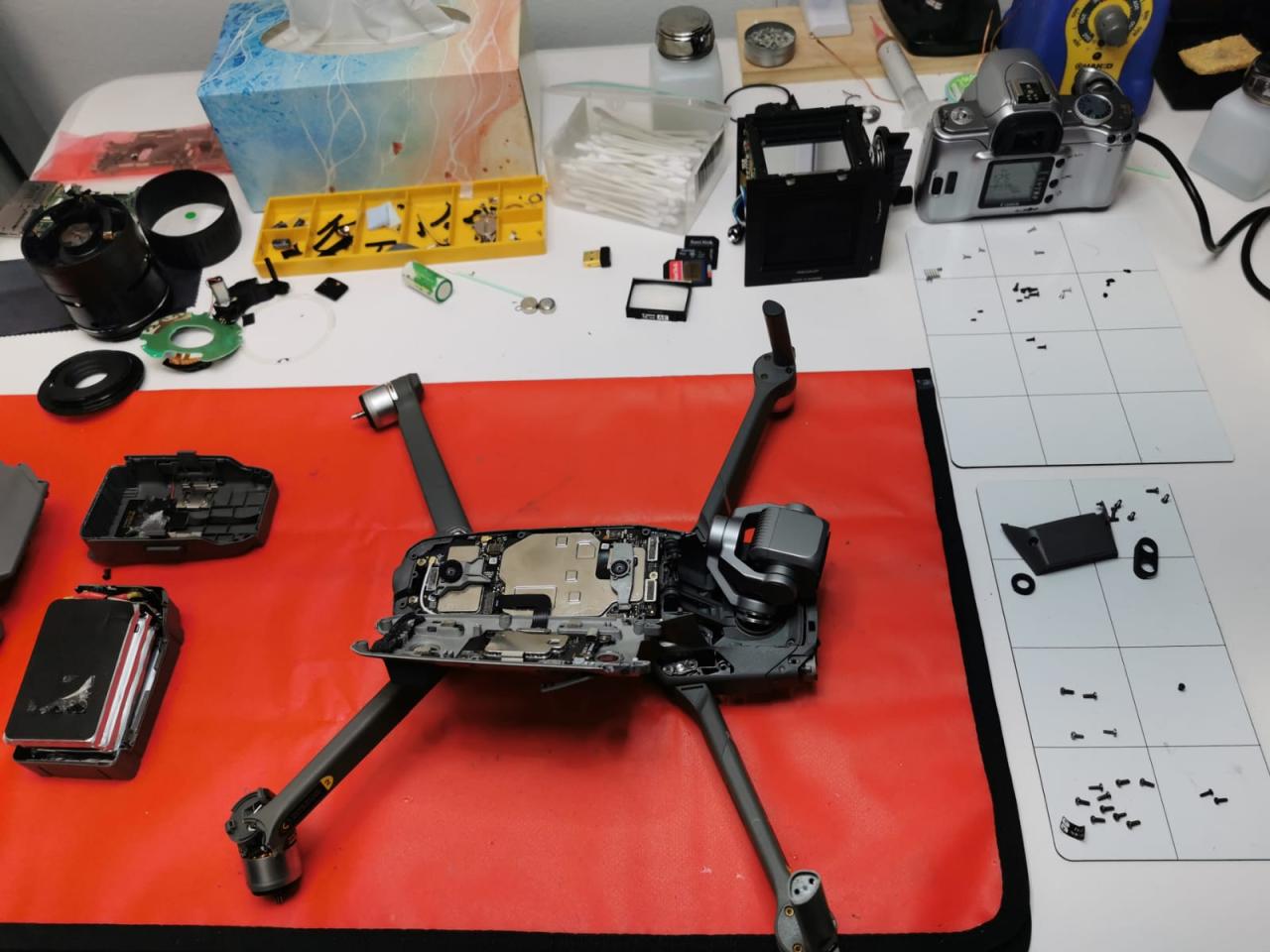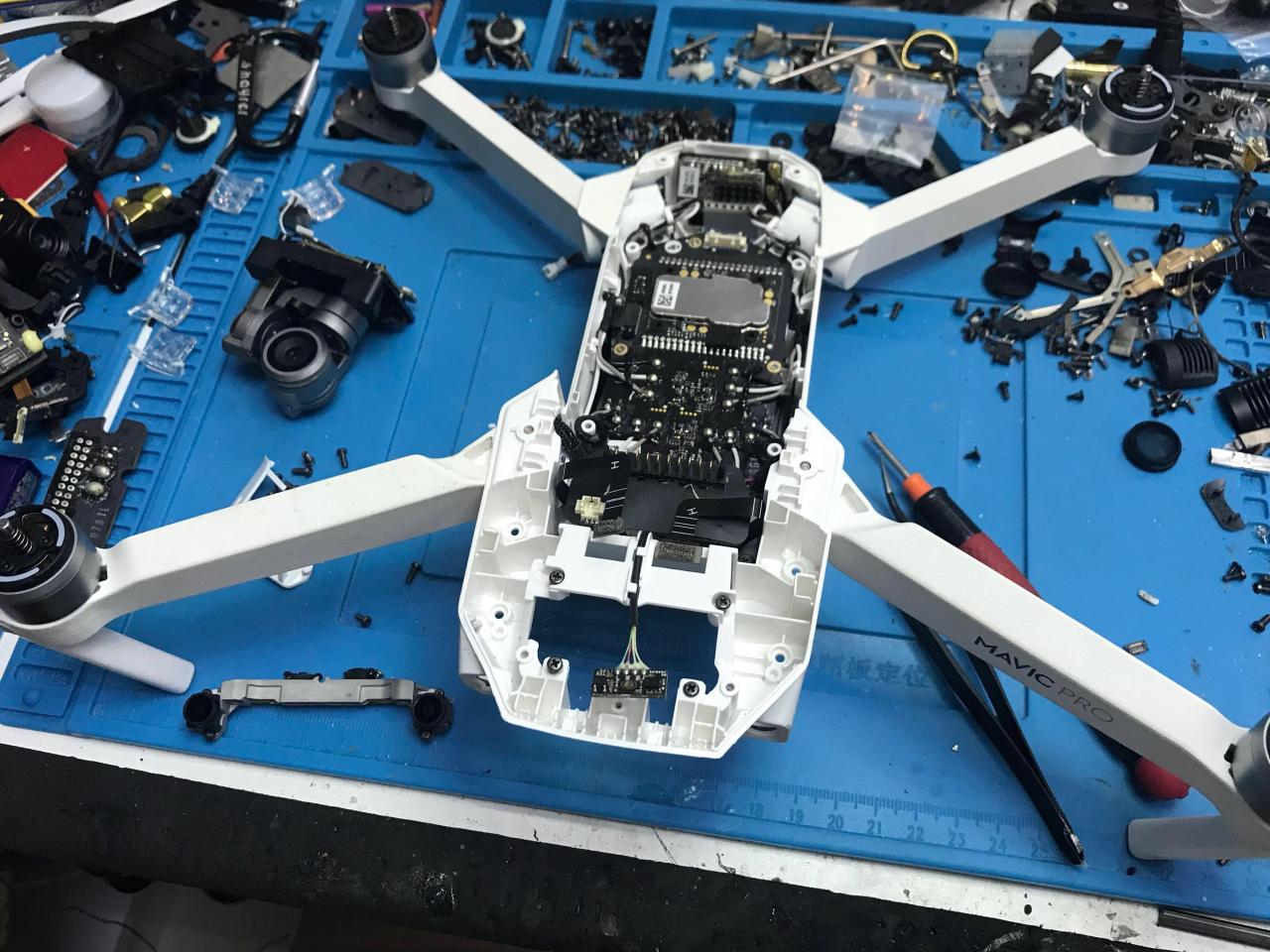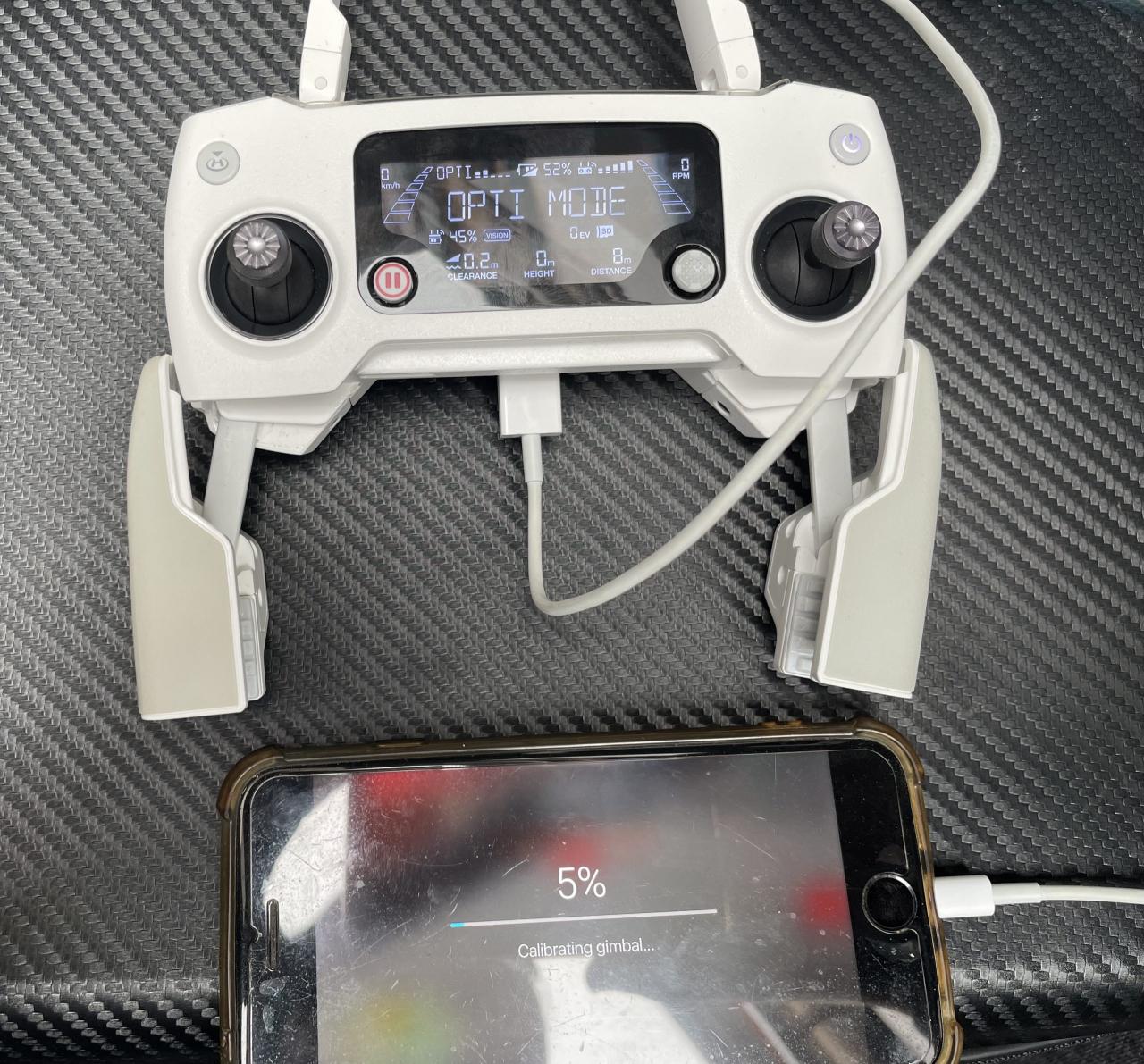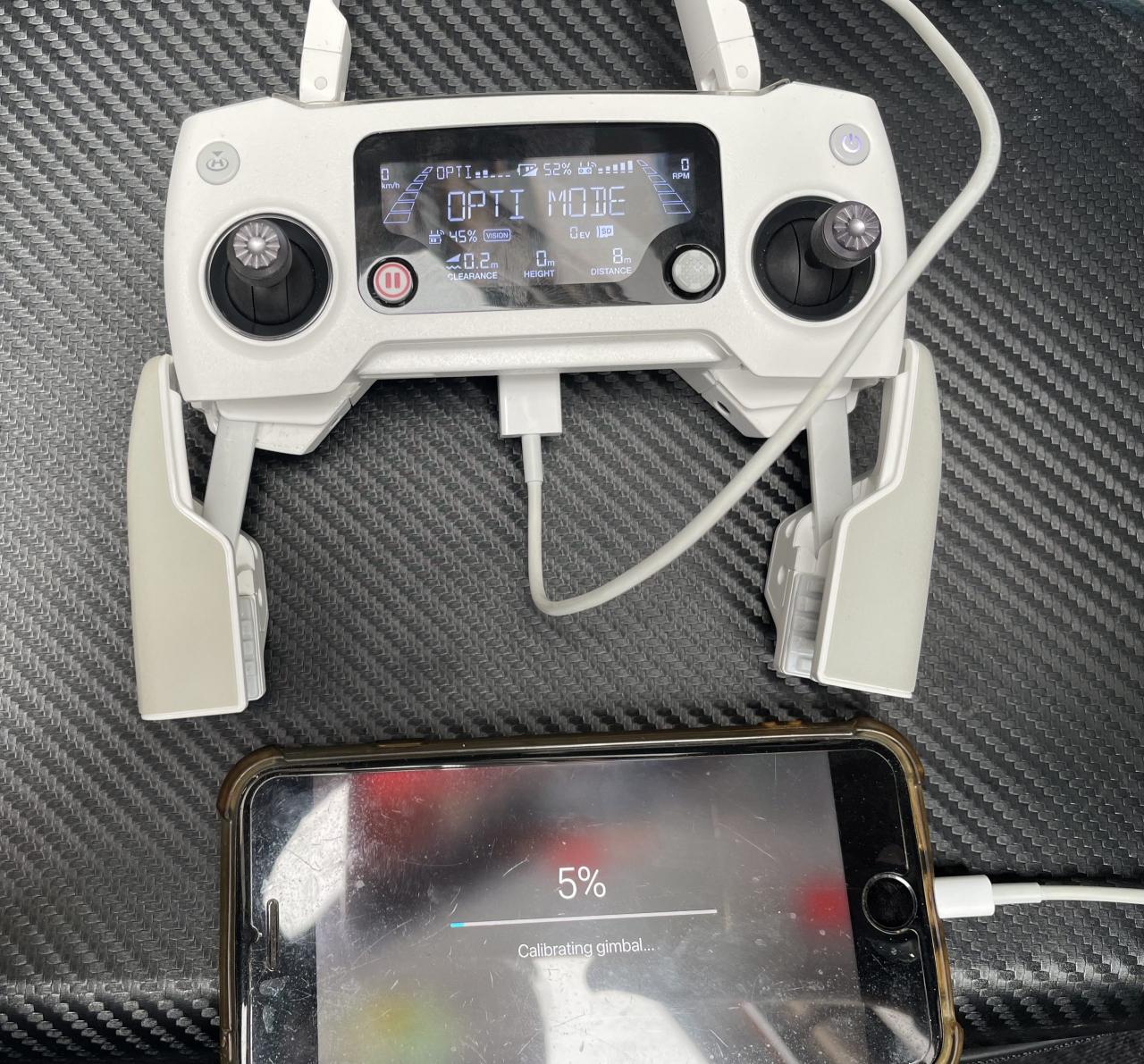DJI drone repair can be a headache, but don’t panic! This guide covers everything from identifying common problems and choosing a repair service to tackling basic fixes yourself. We’ll explore the ins and outs of fixing your DJI drone, whether it’s a Mavic, Phantom, or Inspire model. Get ready to troubleshoot, repair, and keep your drone flying high.
We’ll delve into the most frequent repair issues, offering insights into their causes, symptoms, and estimated costs. We’ll compare different repair options – authorized centers, independent shops, and DIY – weighing their pros, cons, and price tags. We’ll even show you how to perform some basic repairs yourself, like replacing propellers or cleaning the camera lens. By the end, you’ll be equipped to handle many drone repair situations with confidence.
Common DJI Drone Repair Issues
DJI drones, while robust, are susceptible to various issues. Understanding common problems and their causes can help you diagnose and address them effectively, potentially saving you time and money. This section details frequent repair needs, highlighting differences across various DJI drone models.
Frequent DJI Drone Repair Needs
Here’s a breakdown of five common DJI drone repair issues, their causes, symptoms, and estimated repair costs. Remember, these costs are estimates and can vary depending on the repair shop and the extent of the damage.
Need DJI drone repair? Knowing how to maintain your drone is crucial, especially considering the increasing use of drones in conflicts like the recent events in Russia; check out this news report on the drone attack russia to see the impact of drone technology. Proper maintenance can prevent costly repairs and downtime, ensuring your drone is ready when you are.
| Issue | Cause | Symptoms | Typical Repair Cost (USD) |
|---|---|---|---|
| Gimbal Malfunction | Impact, water damage, internal component failure | Unstable video footage, jerky movements, gimbal motor noise | $100 – $500 |
| Camera Issues | Lens damage, sensor malfunction, software glitches | Blurry images, distorted video, no image output | $150 – $400 |
| Flight Controller Problems | Impact, water damage, software errors | Unresponsive controls, erratic flight behavior, sudden crashes | $200 – $600 |
| Battery Issues | Overcharging, extreme temperatures, age | Reduced flight time, inability to charge, swelling | $50 – $200 per battery |
| Propeller Damage | Collisions, impacts with objects | Unbalanced flight, vibration, reduced flight performance | $10 – $50 per propeller |
Repair Needs Across DJI Drone Models
Repair needs can differ slightly between DJI drone models due to variations in components and design. Here’s a summary of these differences:
- Mavic Series: These foldable drones are prone to gimbal and camera issues due to their compact design. Propeller damage is also common due to their smaller size.
- Phantom Series: Known for their robustness, Phantoms are less prone to gimbal issues but can experience flight controller problems due to their more complex systems.
- Inspire Series: These professional drones are more complex and repairs tend to be more expensive. Gimbal and camera repairs are common, given their high-resolution capabilities.
Troubleshooting Sudden Power Loss
A flowchart can simplify troubleshooting a drone experiencing sudden power loss. Here’s a description of such a flowchart:
Start: Drone experiences sudden power loss. Check 1: Battery fully charged? Yes: Proceed to Check
2. No: Charge battery. Check 2: Battery connections secure?
Yes: Proceed to Check
3. No: Secure battery connections. Check 3: Power switch on? Yes: Proceed to Check
4. No: Turn on power switch.
Check 4: Any external damage? Yes: Seek professional repair. No: Attempt restarting drone. Result: Drone powers on? Yes: Problem resolved.
No: Seek professional repair. End
Finding and Choosing a DJI Drone Repair Service

Choosing the right repair service is crucial for a successful repair and to avoid further damage. Let’s explore the different options and factors to consider.
So, your DJI drone needs some TLC? Getting it fixed properly is key to keeping those aerial shots amazing. Before you send it off, though, maybe check out some awesome drone footage inspiration; you might find some great ideas for your next flight after seeing what’s possible, like this incredible video showcasing drone in Paris. Then, once you’ve got your creative juices flowing, you can focus back on getting your DJI drone back in top shape for your next project.
DJI Drone Repair Options Comparison
Three main options exist for DJI drone repairs: authorized service centers, independent repair shops, and DIY repairs. Each has its pros and cons.
| Option | Pros | Cons | Cost Estimate (USD) |
|---|---|---|---|
| Authorized Service Centers | Genuine parts, warranty coverage, expertise | Higher cost, longer turnaround time | Varies greatly depending on the repair; expect higher end of the range for any repair type. |
| Independent Repair Shops | Potentially lower cost, faster turnaround time | May use non-genuine parts, may void warranty | Varies greatly, potentially lower than authorized centers. |
| DIY Repairs | Lowest cost, immediate repair | Requires technical skills, risk of further damage, may void warranty | Cost of parts only |
Key Factors When Selecting a Repair Service
Three crucial factors should guide your choice:
- Reputation: Research online reviews and seek recommendations from other drone users. A reputable service will have a history of satisfied customers and positive feedback.
- Warranty: Inquire about the warranty offered on repairs. A good service will provide a warranty on their work, ensuring a certain level of quality and protection.
- Turnaround Time: Ask about the typical turnaround time for repairs. A quick turnaround can minimize downtime and get your drone back in action faster.
Questions to Ask Potential Repair Services, Dji drone repair
Before entrusting your drone, ask these questions:
- What is your experience with repairing DJI drones?
- What type of parts do you use (genuine or third-party)?
- What is your estimated turnaround time?
- What is your warranty policy?
- What is the total cost of the repair, including parts and labor?
- Do you offer a detailed quote before starting the repair?
DIY DJI Drone Repair: Basic Procedures

For minor repairs, DIY solutions can be cost-effective. However, always prioritize safety and proceed with caution. Improper repairs can cause further damage and void warranties.
Replacing a Damaged Propeller
Replacing a damaged propeller is a straightforward process. Remember to always power off your drone before beginning any repair.
- Gather necessary tools: Phillips head screwdriver, replacement propeller.
- Carefully remove the damaged propeller by unscrewing it from the motor arm.
- Attach the new propeller, ensuring it is securely fastened.
- Inspect the new propeller for proper alignment and secure fastening before flight.
Cleaning the DJI Drone Camera Lens and Sensor
Regular cleaning is crucial for maintaining optimal image quality. Use only specialized cleaning solutions and tools designed for delicate electronics.
Image 1: Close-up of the camera lens showing accumulated dust particles. Image 2: The appropriate cleaning solution being applied gently to the lens with a microfiber cloth. Image 3: The microfiber cloth gently wiping the sensor, ensuring no pressure is applied. Image 4: The camera lens and sensor after cleaning, showing a clear and dust-free surface.
Need DJI drone repair? First, check out what’s happening in the world of drones to see if your issue is common – check out the latest drone news today for potential solutions or recalls. Staying updated on industry news can often help you troubleshoot before resorting to a full repair, saving you both time and money on your DJI drone.
Diagnosing and Replacing a Faulty DJI Drone Battery

Faulty batteries pose safety risks. Always follow safety precautions when handling and replacing batteries. Never attempt to disassemble or repair a battery internally.
- Assess the battery for any signs of damage (swelling, leakage).
- If damaged, replace the battery with a genuine DJI battery of the correct type.
- Always use the correct charger and follow the manufacturer’s charging instructions.
- Store batteries in a cool, dry place to extend their lifespan.
Cost and Warranty Considerations for DJI Drone Repairs
Understanding repair costs and warranty coverage is vital for budgeting and protecting your investment.
Typical Repair Costs for DJI Drone Components
| Component | Typical Repair Cost (USD) | Factors Affecting Cost | Warranty Coverage |
|---|---|---|---|
| Gimbal | $100 – $500 | Severity of damage, model of drone | Usually covered under manufacturer’s warranty if not due to user error. |
| Flight Controller | $200 – $600 | Complexity of repair, model of drone | Usually covered under manufacturer’s warranty if not due to user error. |
| Camera | $150 – $400 | Type of camera, extent of damage | Usually covered under manufacturer’s warranty if not due to user error. |
Importance of Understanding Warranty Coverage
Before initiating any repair, review your drone’s warranty. Understanding the terms and conditions will determine whether the repair is covered and prevent unexpected expenses. Improper repairs can void your warranty.
Sample Warranty Claim Form
A sample warranty claim form would include fields for: Customer Name, Drone Serial Number, Date of Purchase, Description of Damage, Proof of Purchase, Repair Request, Contact Information.
Preventing DJI Drone Damage and Extending Lifespan
Proactive measures significantly extend the lifespan of your DJI drone and reduce the need for repairs.
Five Tips for Preventing DJI Drone Damage
- Proper Storage: Store your drone in a dry, cool, and dust-free environment, ideally in a protective case.
- Pre-flight Checks: Always perform thorough pre-flight checks to identify any potential issues before flying.
- Safe Flying Practices: Avoid flying in harsh weather conditions or near obstacles.
- Careful Handling: Handle your drone with care to avoid accidental damage.
- Regular Cleaning: Keep your drone clean and free of debris.
Importance of Regular Maintenance
Regular maintenance is crucial for extending the lifespan of your drone. A maintenance schedule should include:
- Weekly: Inspect propellers, clean the drone body.
- Monthly: Check battery health, inspect gimbal and camera.
- Quarterly: Perform a more thorough inspection of all components, including the flight controller.
Infographic: Best Practices for Storing and Transporting a DJI Drone

The infographic features a visual representation of a proper storage case, highlighting the importance of using padding (e.g., foam inserts) and keeping the drone away from moisture. It also depicts the recommended way to pack the drone for transportation, including securing the propellers and gimbal, and using a hard case to protect it from impacts. The infographic uses clear visuals and concise text to convey the best practices for minimizing damage during storage and transport.
Last Point
From diagnosing problems and choosing a repair path to performing basic maintenance and preventing future damage, this guide equips you to keep your DJI drone in top shape. Remember, a little preventative care goes a long way! Whether you opt for professional repair or tackle minor fixes yourself, understanding your drone’s mechanics and maintenance needs is key to maximizing its lifespan and enjoyment.
Happy flying!
FAQ Guide
What’s the warranty on DJI drone repairs?
Warranty coverage varies depending on the model, where you bought it, and the specific component needing repair. Check your purchase documentation or DJI’s website for details.
Can I void my warranty by attempting a DIY repair?
Yes, attempting repairs yourself might void your warranty unless explicitly permitted by DJI. Always check your warranty terms before doing any DIY work.
How often should I perform drone maintenance?
Regular maintenance, including cleaning and inspections, should be done after every few flights or at least monthly, depending on usage.
Where can I find genuine DJI parts for repairs?
Authorized DJI service centers are the best source for genuine parts, ensuring compatibility and quality. Be wary of counterfeit parts from unauthorized sellers.
